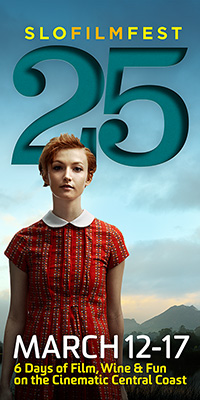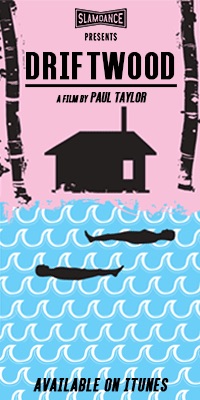Skye Borgman’s ABDUCTED IN PLAIN SIGHT is a dream of impossibility for the true crime documentary enthusiast. Tracing the two abduction/kidnappings of a pre-teen Jan Broberg by Bob Berchtold with the arguable permission of her parents, the film begins with a reality that is hard for one to wrap their head around, even acknowledging that the events of the film took place in the 70s and to a naïve Mormon family in Idaho – that two parents would stand by and more or less give permission to a man to take their little girl and even “marry” her.
And that is both just the beginning, and only scratching the surface of this affecting, mind-blowing, and even touching film. It’s to Borgman’s deft hand with the subject matter, and literally the Brobergs themselves, as well as taking great pains to mimic the time period in style and feel with the recreated footage that further engrosses you, the viewer. It’s unbelievable. But it happened. And once you see it, you can’t stop talking about it.

The Brobergs – A family portrait
- This is – in many ways – a seemingly unbelievable story. Were you aware of all the key elements when you initially embarked on the project or were there surprises uncovered in the course of doing the interviews and doing the forensic work?
I was aware of the basic timeline of events in the story, but we uncovered so much through our interviews and even more once we started digging deeper into the court transcripts and FBI documents. It was really the parents’ revelations to us that were so surprising.
There is a lot we left out of the film too – really crazy stories, but there just wasn’t time and adding these stories wasn’t really moving the story forward. I wish we had gotten the opportunity to interview more of Berchtold’s family. They didn’t want to be part of the filming, which I understand, but getting their perspective would have been really interesting.
- During the larger part of what became a very successful film festival tour for the film, it was titled, FOREVER B. When Netflix picked the film up, they changed that title. What were the thoughts initially when that decision was made versus your thoughts now, since time has passed and the film is actually available to be seen on Netflix?
We had a hard time from the beginning coming up with a title for the film. I had lists and lists of different titles and before we started the festival circuit we landed on FOREVER B, which I thought had a mysterious and layered quality to it… So did Netflix, but they felt that a title which spoke more to the actual events of the film would entice more viewers, so we decided on ABDUCTED IN PLAIN SIGHT.
With FOREVER B a lot of people didn’t really know what they were in for. Some people thought it was going to be a romance movie, others thought it was about Bee Keepers. I liked that it was just a little obscure, but I also completely understand why Netflix wanted a change. I was worried, initially, because we had put so much work into marketing the film as FOREVER B, and I didn’t want to throw all of that work away.
We worked hard to make a smooth transition from one title to another. The audiences that we built, stuck with us, and the reviewers that reviewed us updated the title on their sites, AND because the Netflix release took such a long time, we still had about 8 months to get our audiences accustomed to the title. We also kept going to festivals, doing publicity and getting reviewed and eventually ABDUCTED IN PLAIN SIGHT felt completely normal.

Bob Berchtold, trusted with the girls
- Recently, Jan Broberg’s father, Bob Broberg, passed away. At the screening of the film at Dallas’ Best of Fests film festival last week, you mentioned that his passing has colored your reaction to watching his interviews in the film now. Could you describe how it has impacted your thoughts toward him?
There is a lot more love when I watch his interviews. Love and Loss. I lost my father during the making of this film and Jan lost her father during the release. So I have a stronger connection to Jan too.
I have always had a lot of sympathy for the parents. They carry so much guilt with them and they are so brave for telling their story. The Brobergs have received a lot of negativity online because of this film. It’s easy for people to forget the power of shame and denial when it’s someone else’s story and they move quickly to blame. I truly believe that the Brobergs are just trying to do the right thing by telling their story. Part of me is happy that Bob isn’t here to read all of that negativity, but my heart goes out to his girls.
- One of the unheralded aspects of documentary filmmaking is the casting of actors and the staging of re-enactments of incidents that tell the story of the film. In this case, much is made of Robert Berchtold’s appearance – How good looking he was, or how “sexy” he was. The actor cast for the re-enactments is arguably better looking than Berchtold was in real life. Was that intended purposefully? What was the thought process behind it?
It’s funny, because in all of our pictures of Berchtold, he looks a little bit different. He’s a chameleon. So that made casting easier in a way, but we definitely needed to cast someone with a lot of presence, because that’s ultimately what makes someone appealing. We really hit the jackpot casting Devin Ordoyne as Bob Berchtold, because he brings so many layers to the role. The charmer, the lover, the con man, the monster.

Jan Broberg
- You are a cinematographer as well as a director. Visually, what were some stylistic things you utilized with ABDUCTED IN PLAIN SIGHT to make the film more than a “talking head” movie?
When you have an interview-based film you need to be able to use everything you have in your tool box to create the world. We use documents, letters, newspaper articles, pictures (which we only had a few of because the Brobergs destroyed a lot at one point in time) and re-enactments. I needed to transport the viewer back in time. This story happens in the 70’s and the time period is important because of where we were in understanding sexual abuse and pedophilia. I also felt that it was important to see a little girl because in Jan’s interview she is a beautiful adult woman.
We used 8mm film to shoot all of the re-enactments – which I loved. I knew I wanted to do it that way from the beginning and I knew it would cost more money, but it adds so much to the aesthetic of the movie. So many people have said that I could have gotten the same look in post, and I know that’s mostly true, but as a cinematographer I have a love for film and the qualities of a super 35mm sensor are so different than an 8mm film plane. I don’t want to get too technical here, but there would have been a huge difference in depth of field, grain and focus. It just wouldn’t feel authentic.
I wanted the re-enactments to feel like a home movie that we shot when we were kids. I also know that my camera operating would have been completely different if I had used my big professional camera to shoot the re-enactments. It would have been much smoother and I wanted to make it more amateurish. In order to throw my cinematographer instincts away, I had to throw my big fancy camera away. I bought 4 used 8mm cameras off Ebay for $75 each, set them on auto and started shooting. It’s virtually impossible to see through the viewfinders of those things, so half the time I was shooting blind. I rarely adjusted focus and I just let it roll. I wanted lots of dirt and flares, so I would point it into the sun, touch the unexposed negative, flash the film….basically everything I’ve learned never to do – I did. It was so much fun and it really paid off.

Catching a predator…before that term had been coined.
- The producers on the film, Emily Kincaid and Stephanie Tobey could be thought of as actors, first and foremost. In a general sense, who did what as producers to make the film a reality? And specifically, how did the fact that you are three women shape the direction taken to tell Jan Broberg’s story.
Yes, Stephanie and Emily both can be thought of as actors…and I think that’s part of what drives them. As an actor you are going into audition after audition and you don’t have much control over the type of project you are cast in. Both of these women refused the construct of not having control and set out to make something that they feel truly passionate about. They both bring different skills to the table.
Stephanie has been on the project from the very beginning. She found the story and was so committed to telling it that she set out to do something that she had never done before – produce a documentary. She reached out to Jan, did a lot of the research and organized thousands and thousands of pages of information into a cohesive outline.
Emily came on a bit later in the project and helped with fundraising, managed our social media and became a huge force on the festival circuit. Even though it’s the 3 of us that are the face of the film now, there were so many other women that were critical along the way – AC’s, PA’s, Assistant editors and friends. Ultimately, this movie would not have happened if it hadn’t been women at the helm. We walked into the Broberg house in a different way, we cooked together, we did dishes, we played with grandkids, we gained their trust and that’s how we were able to get the transparent and heartbreaking interviews.
- Aside from the story itself, it is mind boggling at times how free and willing the living principals involved in the story are in discussing the details of what happened and their part in it (since – without giving spoilers – no one really comes out unscathed here other than Jan’s two sisters). Was that due to your incredible cross-examination techniques or the quirk of personalities of everyone involved?
I think it’s a combination of both. The Broberg’s trusted us to tell their story but they have been telling the same story for 40 years, so in a way it has become a memorized script. I wanted them to step away from that script, dig a little deeper and remember different aspects of the story. We had the court transcripts to reference when memory failed and that helped the Broberg’s remember things they hadn’t thought about in a long time. The events that this family went through in the 70’s changed them in a profound way and it is something that they live with everyday. There are certainly moments that the family would rather forget and we asked them to open those wounds, and they did, in a completely transparent way. Never to be erased or taken back. It’s really such an honor that they trusted us so much with their story. I do think that the Broberg’s most painful revelations have provided some healing and I know that their hope is that their story can protect others.
- What do you dread the most about making a documentary film and what is the thing that energizes you to keep coming back for more?
I love production, that’s definitely my favorite part. Heading out and spending time with the people, exploring new worlds that I wouldn’t have been introduced to if I weren’t doing a documentary on them.
The thing I dread most is post-production. We end up shooting hundreds of hours of footage and then have to put it together into a story. A lot of the structure and story is determined beforehand, at least as much as possible, but it always changes, and post is where you end up making your final decisions. Sometimes it’s really exciting to see things come together, but it’s such a balancing act. For the longest time with ABDUCTED IN PLAIN SIGHT we didn’t have an ending that we were happy with. Our editor, James Cude and I just kept hacking away at it,….but we couldn’t make it work. I decided I needed to go back an interview Jan again and she gave me the last line of the film, and I knew the moment she said it that I had my ending.

ABDUCTED IN PLAIN SIGHT
- Just a hypothetical question (and again, avoiding spoilers, but….): Do you think it would be possible for aliens to make it to our planet from another galaxy utilizing technology that was equal to what one would buy at a Radio Shack in the 1970s?
I don’t think that aliens shop at Radio Shack. I think they have way better stores, even in the 70’s!
- Popcorn or Candy?
Popcorn all the way!

Skye Borgman (Photo by Steve Duffy/Selig Polyscope)
ABDUCTED IN PLAIN SIGHT can currently be seen on Netflix.








READER COMMENTS